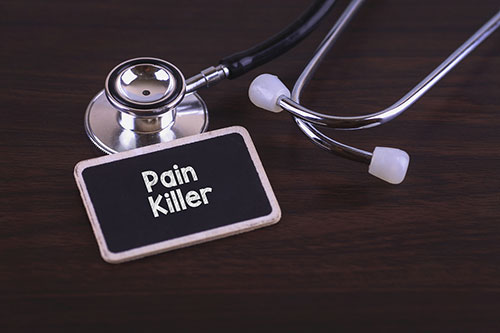Chronic Opioid Therapy (COT): The Undesired Consequences of Opioid Treatment
More than 76.2 million Americans, representing approximately 25% of the population, have experienced pain that lasts longer than 24 hours, according to the National Center for Health Statistics. Chronic pain is so common that it is the leading source of disability in the United States. Unfortunately, the treatment of chronic pain is complex and the source of great debate in the medical field. Although prescribing opioids for chronic pain was once common, the Centers for Disease Control and Prevention now recommend against this option. Chronic opioid therapy leads to numerous physiological and psychological changes that make it inappropriate for management of non-cancer pain.
Defining Chronic Opioid Therapy
Opioids (including morphine, hydromorphone, oxycodone, and fentanyl) are a class of drugs that bind to opioid receptors in the brain and throughout the body. These opioid receptors trigger a cascade of events that lead to analgesic, or pain-killing, properties. While opioids are excellent choices for treating acute pain, such as pain associated with an injury or surgery, they can be problematic for longer-term use (typically defined as longer than 1 month). The American Pain Society recently released updated guidelines expressing concern about the use of prescription opioids for chronic pain because of growing recognition of opioids’ adverse long-term effects.
Undesired Consequences of Opioid Treatment
While chronic opioid treatment is common, medical practitioners increasingly recognize the potential dangers of prescribing opioids to patients over long periods of time. Unfortunately, chronic opioid treatment has several undesired outcomes that can interfere with quality of life.
Opioid Therapy Does Not Always Improve Everyday Functioning
In a systematic review of the scientific literature about chronic opioid therapy, the American Pain Society found that opioids were moderately effective for alleviating pain compared to placebo. However, long-term use of opioids yielded only modest benefits for functional outcomes. This means that although prescription painkillers might reduce pain, they do not necessarily improve your ability to do the activities you enjoy.
For over 26 years, people from all over the world have chosen Waismann Method as their opioid detox provider.
We know the challenges you face and the importance of creating a unique and personal experience for you right from the start.Call for Detox Options 1-800-423-2482
Long-Term Opioid Use Changes Your Endogenous Opioid System
Long-term opioid use changes your endogenous opioid system. Your body naturally produces opioid molecules — that’s why you have opioid receptors. Long-term use of prescription opioids can upset the natural balance of these endogenous (self-produced) opioids. This has enormous ramifications for a variety of processes:
- Stress response. Natural opioids are part of the body’s stress response pathway. When you add opioid painkillers to your system, it throws off your stress response system. The result may be a greater sensitivity to stressful situations and an inability to react typically in the face of adversity.
- Mood. Endogenous opioids are also important for regulation of your mood. Stimulation of opioid receptors triggers feelings of euphoria. Chronic opioid therapy leads to near-constant stimulation of these receptors. Over time, they may become less sensitive to the presence of opioids. As a result, you may experience emotional blunting, depression, or other mood issues.
- Pain sensitivity. Extended use of opioids can actually cause hyperalgesia or more significant sensitivity to pain. This phenomenon can make your chronic pain even worse, causing you to depend on even more on opioids for relief.
Chronic Opioid Therapy Increases Risk of Opioid Misuse
Given the significant problems with opioid abuse in the United States, over-prescription of opioid painkillers has received a great deal of media attention. When you use prescription opioids for an extended period of time, you will develop physiological dependence. Opioid dependence refers to your body’s adjustment to the frequent presence of opioids. You may find that you need more and more pills to achieve the same amount of pain relief. Additionally, you may begin to experience withdrawal symptoms when you have not taken your painkillers in a while. These symptoms are your body’s response to chronic opioid use.
In addition to physiological dependence, many people develop an opioid addiction when prescribed opioids for chronic pain. Addiction is a behavioral and psychological process characterized by intense cravings for opioids. You might find yourself changing your behavior to obtain more pills, recover from the effects of your painkillers, or even seek out heroin for a more intense high.
What Can I Do? Alternative Treatments for Chronic Pain
People struggling with chronic pain often feel stuck when considering the ramifications of chronic opioid treatment. Many would prefer not to be on opioids but are unaware of alternative treatments for their pain. Working with a pain specialist is the best way to receive individualized recommendations for chronic pain. Evidence-based pain treatments include non-opioid medicines, physical therapy, exercise programs, cognitive behavioral therapy, acupuncture, and biofeedback. These methods reduce the risk of opioid dependence and abuse.
For people who have developed a physiological dependence on opioids and wish to detox, it is important to get professional help. Opioid detoxification programs such as those offered by the Waismann Method® can help to clear your body of opioids. Detox treatments start at an accredited hospital under the direct supervision of a quadrupled board certified MD. Furthermore, Dr. Lowenstein is an expert in pain management and addiction medicine. The Waismann Method takes an individualized approach to detox, supporting patients at every step of the process. After undergoing detox, we offer a supportive aftercare environment to help further assess the underlying issues that may perpetuate opioid addiction. We also help patients learn new, opioid-free ways to cope with chronic pain. Our goal is to facilitate the detox process and help individuals achieve the best possible quality of life.






